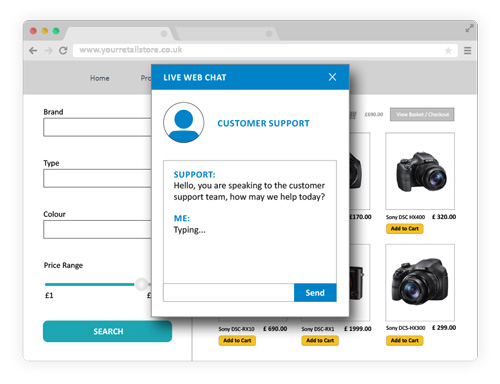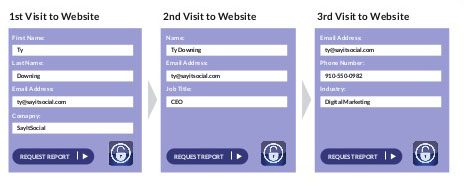‘How do you like your coffee this morning,’ is the first thing the friendly sales guy at the counter asks you at Starbucks. This is generally followed by questions like whether you want it cold or hot, cream or milk, caramel or chocolate. And you get your customized coffee. When you go to the same outlet next time, it will delight you instantly when your friendly guy remembers your coffee preference. That’s what we call personalization.
Goods and services are not what people look for, they want relations, stories, and magic. This is the reason why people are ready to spend 10 times the money for a normal coffee at Starbucks.
Shift from Customization to Personalization
Personalization is a customization itself, just a step ahead. It happens not when you know what you exactly want, it happens when the app, a program, or your smartphone reacts to your actions. It uses all the possible data about you and adapts in a way that makes you feel as if you are interacting with a real person. It starts right from the starting, from the moment a person becomes a user.

To create a unified user experience, it’s important that you maintain the standards along with the personalized services. There are a lot of ways how you can use data to provide a better user experience that not just customized but personalized for users. And those are mainly categorised under Demographic and Behavioural factors.
Demographic factors
It’s hard to maintain individual data of the users and then personalize the service based on that. So it’s always better to group the users based on the time zones, locality, gender etc. Some have products based on the time zones or the geographic locations, say the users from tropical regions will have less of woollen clothes in their search results because of the climatic conditions.
Another one is based on the time of the day, there are some mobile apps like Ye!p, which provides time-based personalization for the users. It provides search results based on the time of the day. Say, for example, if you are opening the app during noon time, it will show you all the restaurants that provide lunch according to your location. And even without registering or signing in.
Localization is another factor too. This is when a website or app changes its whole interface to adapt to the regional audience, not just in the search results or products and services provided. One way to explain this is to quote the example of Coke websites. Coca Cola’s website for different countries is based on the culture and preferences of that location. For example, their website in China is filled up with animations and images that appeal to their audience. But then their website for France region is in tabular format, with white spaces and organised decks.
Another example which can be given is Google’s localized search. Google modifies its search and search results according to the location of the user. Say, for example, If you are in the middle east, whatever search you do, the top results will be based on your location.

Behavioral Factors
It’s always important to know more about the customer behaviour and preferences. This will help you provide services in a better manner and a great user experience too. Better personalization comes from better recommendations. And to do this you should know your user well. The better you know, the better it gets. You can provide recommendations based on the content that the users have added to the favorites, the browsing history, social media profiles, ratings, and reviews etc. This entire data will collectively provide a rich user profile.
Dynamic content or ‘smart content’ is one of the main factors of personalisation. Let’s see how dynamic content works with Amazon.com, which is one of the biggest e-commerce players. During your second visit to Amazon, they provide you with a list of recommendations based on your past searches and purchases. Suppose you have bought a book before, the second time you visit the site, you might get a recommendation for the perfect book for you. As we can see in some of the shopping apps and websites, we can sort the products based on the age, like kids, teens etc.

Another way of behavioral personalization is progressive profiling. You visit a website or an app for the first time, you get a welcome screen and all the other greetings. The next time you visit it again, you will be directly taken to the products and services page etc. Each time you visit the app, the landing page will be based on your previous visit.

Myntra is the perfect example of progressive profiling. When you search for a specific product say ‘party wear’ and then save some to your wishlist or cart and leave; you will be redirected to your cart or the same search page where you left, the next time you visit the app.
Response time is another way of understanding customer behaviour. When a user spends more time on a specific page, it either means that they are having trouble understanding something, or they are finding it difficult to find the desired product. At this point of time, an online chat support kind of option appears on the screen and helps the user to make their experience better.
Sometimes, most of our favorite apps disappoint us because they don’t have the option to save or share your favorite content. Social integration isn’t just providing options to share or save. It’s more about connecting users with their friends or people from the same community etc.
Zomato is the best example. It shows you details about the ratings and reviews done by your friends about a specific restaurant in your locality and helps you choose the best.
But what are the benefits of personalisation? Let’s find out.
- It helps in providing a real-time customer engagement option. The online chats available in most of the eCommerce websites and apps deals in that and provide customers with instant help on any queries.
- Higher conversion rate is another important benefit of personalisation. People like to be pampered, and when they are treated well they tend to come back. So when the users are provided with personalised content, and offers etc, they tend to visit frequently and also increase sales by making a purchase.
- It also helps in retaining existing users, providing a loyal customer base. This in-turn triggers word of mouth recommendations, which is one strong way of converting more customers.
Making the best is a priority
Most of the firms have loads of data but they don’t know how to use it. It’s never too late to make use of this data and give user a solid reason to choose you over your competitors.
When you have a real time responsive design, a rich user profile, a smart content, localised interfaces and search results etc, you know you have everything you need to attract users and turn them into loyal customers and solid leads that can be converted into more sales. It will be your key to providing a stickiness to your user experience and makes them come back again.

Image source 1 | Image source 2 | Image source 3 |
